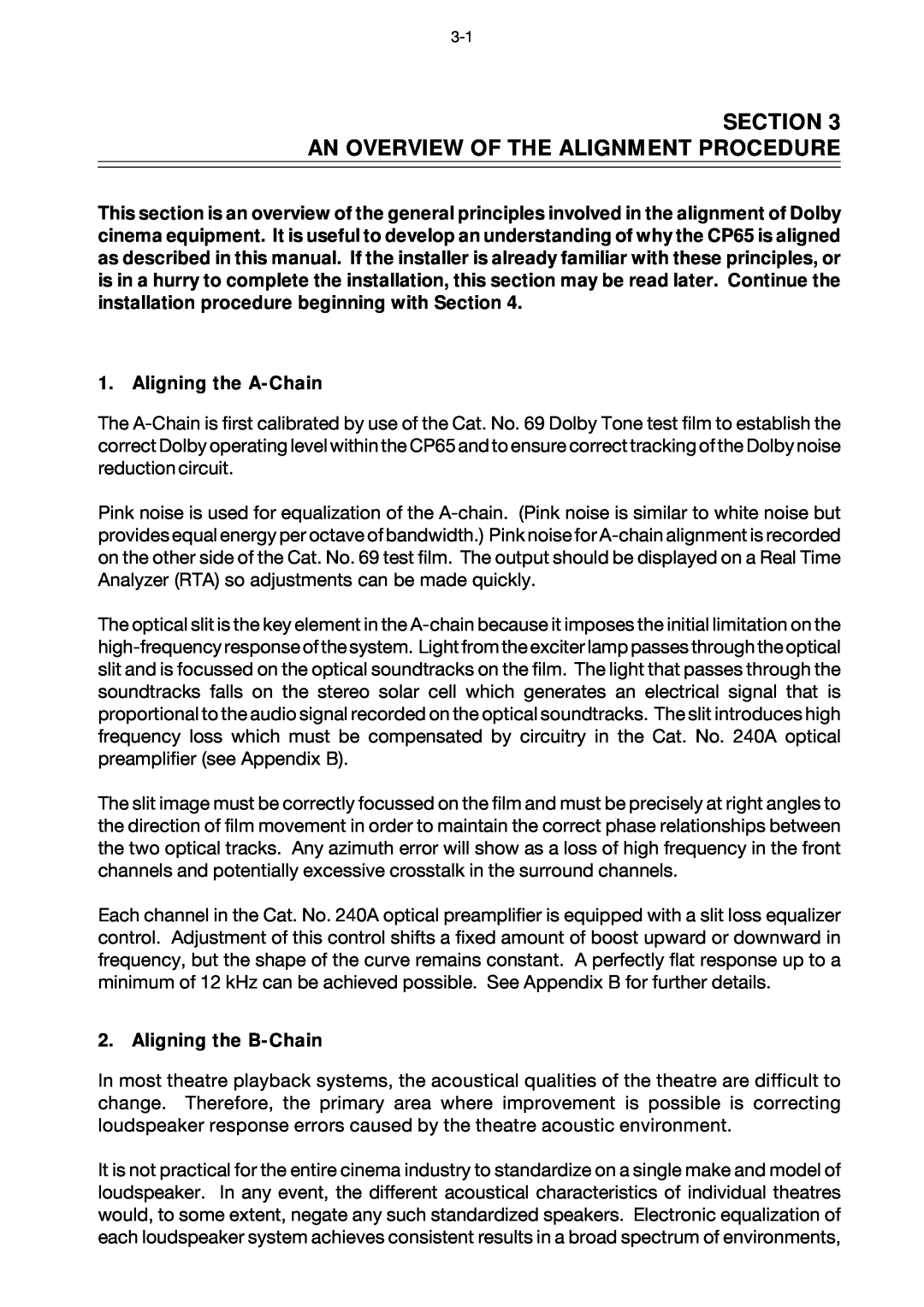SECTION 3
AN OVERVIEW OF THE ALIGNMENT PROCEDURE
This section is an overview of the general principles involved in the alignment of Dolby cinema equipment. It is useful to develop an understanding of why the CP65 is aligned as described in this manual. If the installer is already familiar with these principles, or is in a hurry to complete the installation, this section may be read later. Continue the installation procedure beginning with Section 4.
1. Aligning the A-Chain
The
Pink noise is used for equalization of the
The optical slit is the key element in the
The slit image must be correctly focussed on the film and must be precisely at right angles to the direction of film movement in order to maintain the correct phase relationships between the two optical tracks. Any azimuth error will show as a loss of high frequency in the front channels and potentially excessive crosstalk in the surround channels.
Each channel in the Cat. No. 240A optical preamplifier is equipped with a slit loss equalizer control. Adjustment of this control shifts a fixed amount of boost upward or downward in frequency, but the shape of the curve remains constant. A perfectly flat response up to a minimum of 12 kHz can be achieved possible. See Appendix B for further details.
2. Aligning the B-Chain
In most theatre playback systems, the acoustical qualities of the theatre are difficult to change. Therefore, the primary area where improvement is possible is correcting loudspeaker response errors caused by the theatre acoustic environment.
It is not practical for the entire cinema industry to standardize on a single make and model of loudspeaker. In any event, the different acoustical characteristics of individual theatres would, to some extent, negate any such standardized speakers. Electronic equalization of each loudspeaker system achieves consistent results in a broad spectrum of environments,
